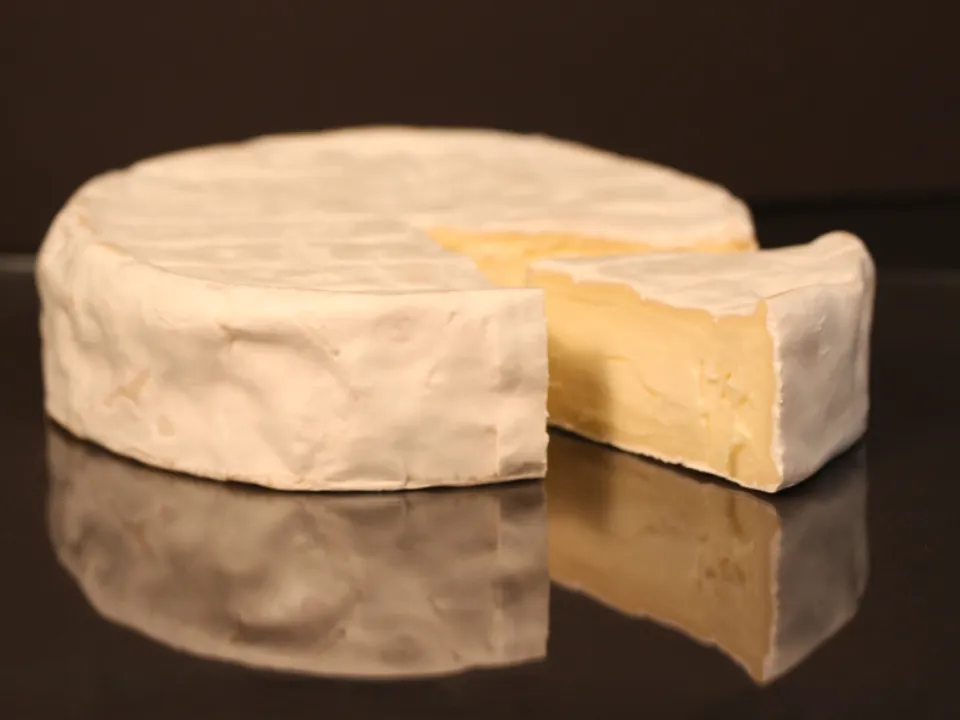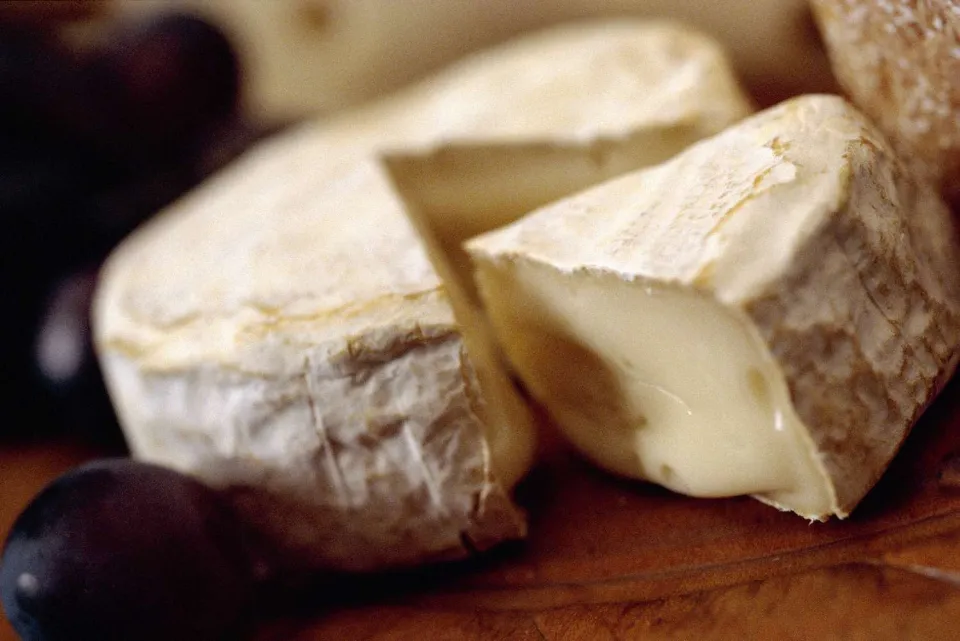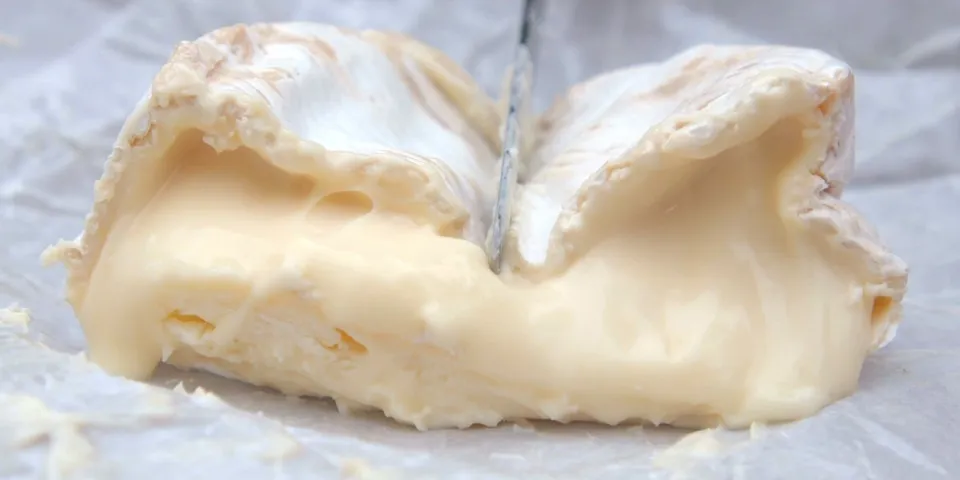Camembert is a French cheese made from cow’s milk. It was first made in the late 18th century in Camembert, Normandy with a moist, soft, creamy surface.
When people are talking about Camembert cheese, they always compare it with Brie cheese. In fact, they are very similar to each other.
Here is an overview of Camembert cheese.

What is Camembert?
France’s Normandy is where camembert cheese first appeared. It is a delicacy that is made from cow’s milk, has a soft, ripened, and creamy texture, and has an edible white mold rind. Camembert’s flavor has been compared to that of mushrooms, eggs, garlic, nuts, milk, grass, and/or fruits. It is widely accessible and affordably priced, and it can be found in specialty shops and supermarkets with a good selection.
How is Camembert Made?
Either pasteurized or unpasteurized cow’s milk can be used to make camembert. Before the milk begins to curdle, it is combined with a yeast culture, allowing the culture to spread and aid in the formation of the rind. The curds are created, cut, put into molds, drained of the whey, and then placed in a brine solution. To ensure that the mold grows uniformly from the inside out while creating a creamy center, the cheese is aged on shelves for at least four weeks and turned frequently. The texture and flavor of cheese that has matured for a longer period of time are both improved.
Camembert Vs. Brie
As a result of their similarities, camembert and brie are frequently combined. They can be used interchangeably and are occasionally misunderstood. Both cheeses are made from cow’s milk, have rinds that are edible and soft, and they both have northern French origins. Camembert can have a stronger flavor and more pronounced earthy undertones than Brie, which is milder and has a buttery, creamy flavor. Despite Camembert’s propensity to be denser and brie’s slight tendency to be runnier, the textures of the two cheeses are comparable.

The method employed by cheesemakers to create Camembert is comparable to that of brie. The addition of cream to brie, in contrast to Camembert, gives it a creamier texture and a higher milk fat percentage. Camembert has a milk fat content of 45% compared to 60% for Brie.
The frequency with which lactic starter is incorporated into the cheese during production is another distinction. While lactic starter is only added once to brie at the beginning of the process, it is added five times to Camembert, giving it a stronger flavor.
Uses
Camembert is a great addition to cheese boards and tastes best when served with fruit, nuts, crackers, slices of baguette, and at room temperature. When baked, Camembert will have a slightly stronger flavor than baked brie, whether it is wrapped in pastry or not. In gratins, casseroles, sauces, grilled cheese sandwiches, paninis, pizzas, and flatbreads, melt slices or chunks of Camembert cheese.
Storage
Until you’re ready to use it, keep Camembert in its original packaging in the refrigerator. In order for the cheese to have the best flavor and texture, remove it from the refrigerator and let it come to room temperature for about an hour. When wrapping after opening, use wax paper or the original packaging before tightly wrapping in plastic wrap or foil for up to two weeks.
Look over the cheese before consuming. The disc in its container or box should feel full and have a fresh, white rind appearance. Watch out for wet, slimy, or brown spots, as well as a withered appearance.
Additionally, camembert is freezer-safe for three months. To store wedges for freezing, completely compress the air and wrap them in plastic wrap or aluminum foil. Before using the cheese within two days, let it defrost in the refrigerator over night. The cheese will work best in cooked dishes because freezing might slightly alter its consistency.

Substitutes
Other creamy, soft-ripened cheeses with bloomy rinds, like Saint-André, Brillat-Savarin, or Mt. Tam, are suitable alternatives to Camembert in addition to brie.
Conclusion
Camembert cheese is a traditional cow’s milk cheese from Normandy that bears the name of a village there. By reading this useful article about the similarities and differences between these two well-known types of cheese, you won’t ever again confuse brie and Camembert!
Related Reading
FAQs
What Is the Difference between Brie and Camembert Cheese?
Flavor: Camembert has a stronger flavor than brie. During the cheesemaking process for camembert, makers add a lactic starter five times. For brie, makers add a lactic starter at the beginning of the cheesemaking process, resulting in a mild flavor. Milk fat: Brie has a higher fat content than camembert.
What Does Camembert Taste Like?
The fresh Camembert cheese is bland, hard and crumbly in texture. Young Camembert has a milky and sweet taste. As the cheese matures, it forms a smooth, runny interior and rich, buttery flavour. The white bloomy rind is because of a white fungus.
Can You Eat the Skin on Camembert Cheese?
Yes, you can eat the rind of Camembert, Brie, or any soft-ripened cheese. The white mold is Penicillium camembert (a.k.a. P. candidum), which gives these cheeses their characteristic bloomy rind. The rind is totally edible and adds texture and flavor to the cheese.


